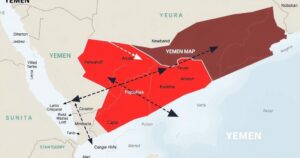Conflict in Syria: Calm in Damascus, Turmoil in the Northeast

While Damascus enjoys a newfound calm under interim president Ahmed al-Shara, northeastern Syria endures fierce battles between Kurdish-led and Turkish-backed militias. This conflict poses critical challenges for Syria’s unity and security, especially with the revival of the Islamic State and tensions concerning Kurdish aspirations for autonomy. Neighboring countries remain wary of the potential spillover effects of this turmoil.
Amidst the calm in Damascus, where the new interim president, Ahmed al-Shara, has facilitated a national unity conference and fostered a sense of community among residents, significant turmoil persists in northeastern Syria. This region, largely controlled by factions unrecognized by the Damascus government, remains embroiled in ongoing conflicts, with airstrikes and artillery shelling displacing countless individuals.
The entrenched fight involves the Kurdish-led Syrian Democratic Forces, which receive support from the United States, clashing with a primarily Syrian Arab militia backed by Turkey. The intensity of warfare has escalated following the ousting of longtime dictator Bashar al-Assad by Islamist rebels in December.
Critical implications arise from this conflict, not only regarding President al-Shara’s ambition to achieve national unification and exert his authority over various factions, but also in regards to containing the Islamic State, which has experienced a resurgence. Concerns among neighboring nations persist, fearing that the volatility within Syria could lead to cross-border repercussions.
The Kurdish population, constituting about 10 percent of Syria’s demographics, is particularly affected. For years, they have established a semiautonomous region in the northeast, and the increasing hostility from the Turkish government adds to the complexities, as Turkey perceives Kurdish factions as a domestic threat due to their aspirations for autonomy.
As the situation in Syria evolves, the balance hangs precariously between achieving unity and addressing deep-rooted ethnic and political strife. The outcome of the ongoing battles in the northeast will likely shape both Syria’s future and its broader regional implications.
The situation in Syria presents a profound challenge for the new interim president as he seeks to unify a fragmented nation while managing escalating conflicts in northeastern regions. The power struggle between Kurdish forces and Syrian Arab militias poses significant threats not only to internal stability but also to the security of neighboring countries. The emerging dynamics could decisively influence the fate of ethnic minorities like the Kurds and the broader geopolitical landscape.
Original Source: www.nytimes.com








